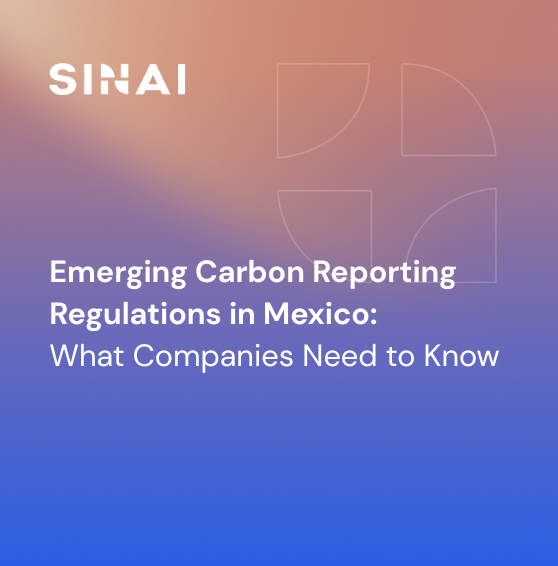
Four Challenges Businesses Must Overcome To Achieve Net Zero Value Chains
The number of net zero pledges by public and private sector actors nearly doubled in less than a year, with more than 2500 cities, states, regions, investors, and firms now committed to credible targets to reach net zero by 2050 at the latest.
The good news is that real dedication to climate action is growing fast in all industries and sectors of society. Now is the time to accelerate robust action and implementation. With two-thirds of the average firm’s environment, social, and governance footprint attached to their suppliers, the pressure is on procurement leaders to take bold action and to make a decisive difference in their firm’s deep decarbonization efforts.
Zeroing in on value-chain emissions enables many customer-facing firms to impact a volume of emissions several times higher than they could if they focussed on decarbonizing their direct operations and power consumption alone. And achieving a net zero value chain is possible with limited additional costs.
What is value chain sustainability?
Value chain sustainability refers to your firms’ efforts to consider the environmental and human impact of your products’ journey through the supply chain, from sourcing raw materials to production, storage, delivery, and every transportation link.
The goal of value chain sustainability is to minimize your harm to the environment from factors like energy usage, waste production, and water consumption, while positively impacting the people and communities in and around your operations.
Four challenges in becoming a net zero business
For firms trying to fight climate change and achieve net zero within their value chains, there are four key challenges they must overcome:
- Weak carbon accounting
- The supplier emissions data gap
- Capturing and maintaining engagement; and
- Industry alliances
Challenge 1: Weak carbon accounting
The carbon accounting currently performed at several firms today isn’t adequate when it comes to what is needed to reach net zero as quickly as possible. Organizations are collecting only scopes 1 and 2 emissions that fail to capture process-level emissions. This weakened carbon accounting stops firms from realizing process-level mitigation opportunities that could significantly impact their product’s value chain emissions and bottom-line.
Robust carbon accounting takes scope 3 emissions into account, also known as value chain emissions:

Challenge 2: The supplier emissions data gap
The quality of emissions data collected from suppliers in your value chain presents a significant challenge as you work towards becoming a net zero business.
Many organizations are not obtaining primary data from their suppliers. Instead, they are using emissions estimations based on broad sector-level data. By relying on estimates, your firm could be missing out on supply chain abatement opportunities that could transform the sustainability of your value chain and your low-carbon strategy more widely.
Challenge 3: Capturing and maintaining engagement
Another key challenge facing leaders trying to pivot to a net zero business is effective change management and communication with staff.
Your firm’s employees and wider value chain most likely want and need upskilling on everything from climate change basics to accurate emissions accounting and management and guidance on maintaining effective partnerships. Innovation in processes, technologies, and alliances means staff and value chain engagement can’t be a one-off thing, rather a consistent and sustained education as part of your firm’s sustainability strategy.
Educating your team across every area of your firm provides significant benefits. An upskilled sales department, for example, can better communicate your firm’s net zero business sustainability strategy to your customers. Your upskilled procurement department can engage suppliers and find the best renewable energy sources available.
Challenge 4: Industry alliances
And finally, it is vital companies understand the importance of collective action when addressing the net zero challenge. The real challenge facing business leaders today is where to prioritize their efforts within alliances that make a difference.
The undeniable power of effective alliances was a theme that took center stage at the United Nations organized COP26 in Glasgow last year, which saw the unveiling of several private and public sector collaborations addressing the net zero challenge and the goals of the Paris Agreement.
Before the COP26, the Net Zero Asset Owner Alliance launched and is providing a step-change in the financial services industry’s efforts to take responsibility for its part to tackle climate change. The Alliance’s first few years of operation have helped the industry move low-carbon and climate resilience from a ‘nice-to-have’ to something that is factored in everything a banker or investor does.
Another excellent example of alliances making a positive impact in tackling climate change is the 13 climate partnerships in Denmark’s business sectors, including the energy-intensive industry, construction, and the energy and utilities sector. The goal of the coalition is to bring companies together to explore and define how each of their sectors could contribute to Denmark’s 2030 target to cut emissions by 70% below its 1990 levels while supporting Danish jobs, competitiveness, exports, welfare, and prosperity. Chief executives led the partnerships representing their industry sectors and were given autonomy to develop comprehensive proposals. In particular, each partnership was tasked with creating a sectoral roadmap that includes specific ambitions within the industry, contributions to other sectors, and contributions to international targets and value chains.
By the summer of last year, each of the 13 climate partnerships achieved its goal of delivering 13 sectoral roadmaps.
Deploy a climate positive strategy and reach net zero

With SINAI, your firm can bring your entire value chain into one platform.
We’ve made it possible to invite and manage your suppliers’ emissions data year long with just one click. Using sophisticated scope 3 accounting tools, your company can grasp your value chain’s impact quickly and easily. We’ll also make sure your suppliers share the correct data as you move closer to becoming a net zero business.
To see SINAI’s intelligent GHG emissions management solution in action, contact us for a demo today.

-2.png)
%20(7).png)








